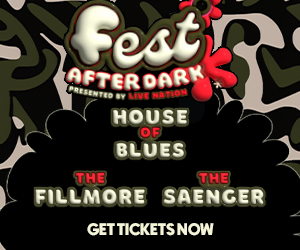Last day, and Jonathan Batiste starts it with admirable nerve with a melodian solo. The air-powered instrument only has a two-octave, making the piece a rather tight meditation on a simple phrase. In a white blazer, white dress shirt and black high-water slacks, he’s a striking presence onstage and offers up an audience-friendly notion of jazz – playful, melodic and broadly referential. During “Kindergarten,” he followed a piano solo with a melodian solo that morphed into the melody of a Mardi Gras Indian chant. Appropriately, he turned it into a call-and-response segment, first with the audience and then with the horn players. From there, he switched put down the melodian and played an electric keyboard for some not-found-in-nature sounds. If that all sounds busy and/or gimmicky, there was an element of that, but Batiste held it together. The set sounded more like evidence of a restless imagination than someone pandering to the audience with the musical equivalent of quick cuts in movies.
The difference between Brother Tyrone and Sharon Jones is that the Dap-Kings work to create a moment that never actually existed, where Memphis horns and Motown drums played behind James Brown. Brother Tyrone seems to have emerged from a melted iceberg, ready to make the southern soul of 30-plus years ago without a hint of retro-ness. One isn’t necessarily preferable to the other, but those who loved Jones’ first weekend set need a dose of Tyrone as well.
In the Jazz Tent, Shamarr Allen showed why his star is on the rise. His charisma, voice and trumpet tone are such that he had the crowd out of its seats and cheering along for ideas that were, frankly, three-quarters there. When he rapped, they were with him. When he segued from a Bob James-like moment into an instrumental “Smells Like Teen Spirit,” he had people up and singing along almost immediately. For the funky, vocal “Can You Feel It,” people were up and dancing, and each moment was fine in isolation. But the Bad Plus remade “Teen Spirit” in 2003, and “Can You Feel It” is only a note or two removed from Sly’s “If You Want Me to Stay.”
Allen’s ambition is clearly to develop a jazz-funk-rock hybrid, and it’s a good one. New Orleans’ funk bands have gnawed on the bones of the Meters for so long that there’s little left to discover. At this point, the shortcomings are the shortcomings of youth, and time and broader listening will help him get where he’s going. It took Trombone Shorty a while for Orleans Ave. to find its synthesis; fortunately, Allen’s charm and talent mean he’s going to get the time and audience necessary to work his ambitions to a more satisfying conclusion.
It was pretty funny watching the Congo Square stage crew trying to erect a wind baffle in front of DJ Soul Sister’s table. Finally, it took two tattooed women to hold it up, and once she started spinning, they began dancing, giving the moment more spectacle. Soul Sister had people up dancing immediately and ramped up the energy before Chuck Brown, making me think that assigning a DJ to spin between sets every day at Congo Square would be a cool idea. It would further give the stage a unique identity, keep the energy up there, and it would draw attention to a DJ community that’s deeper than just Soul Sister and DJ Captain Charles.
It’s hard to say a lot about the Neil Young show without doing a full recap. It’s more or less what you’d expect, though I was impressed by the relatively seamless way he powered down from the distortion-enriched electric guitar songs to the delicate beauty of “Needle and the Damage Done” and “Heart of Gold,” then revved things back up again. The show was also beautifully uncompromising, meandering a bit during “Change Your Mind” and testing the audience’s patience went he launched into the second solo for “Down by the River.” In the Acura VIP compound, that was enough to shake off the half-milers, but they walked off just as the song got hot. Young found an idea that compelled him and the band followed into a very intense, raging place.
The stage set itself suggested an idiosyncratic show, complete with a pipe organ, an open-fronted barroom piano and a folk art-like pile of amplifiers that might explain his sound. He finished the set in front of that stack mimicking the sustained final piano chord for his cover of “A Day in the Life” with feedback. He eventually shredded his strings and banged them on the pickups for additional racket, then leaned the guitar against the stack, walked to the xylophone at the back of the stage and in a nice touch of wit, plinked out the chord one more time and that was it. Then the rain came and I went home. That was enough.




